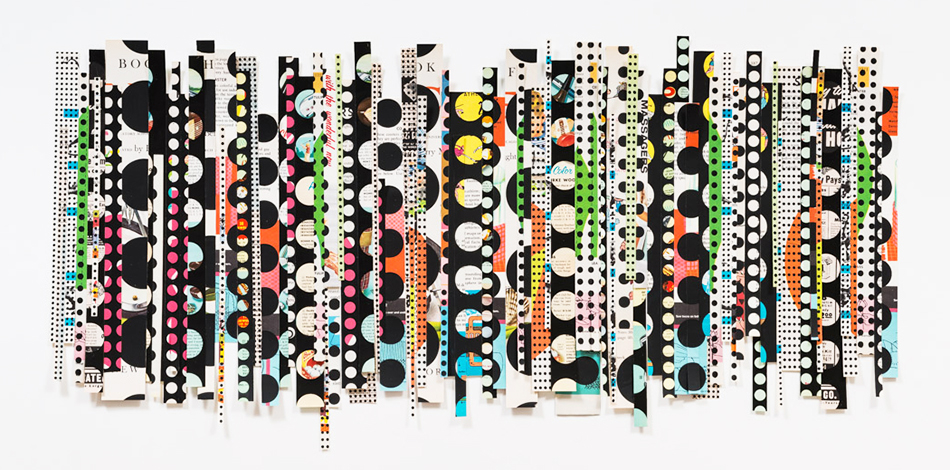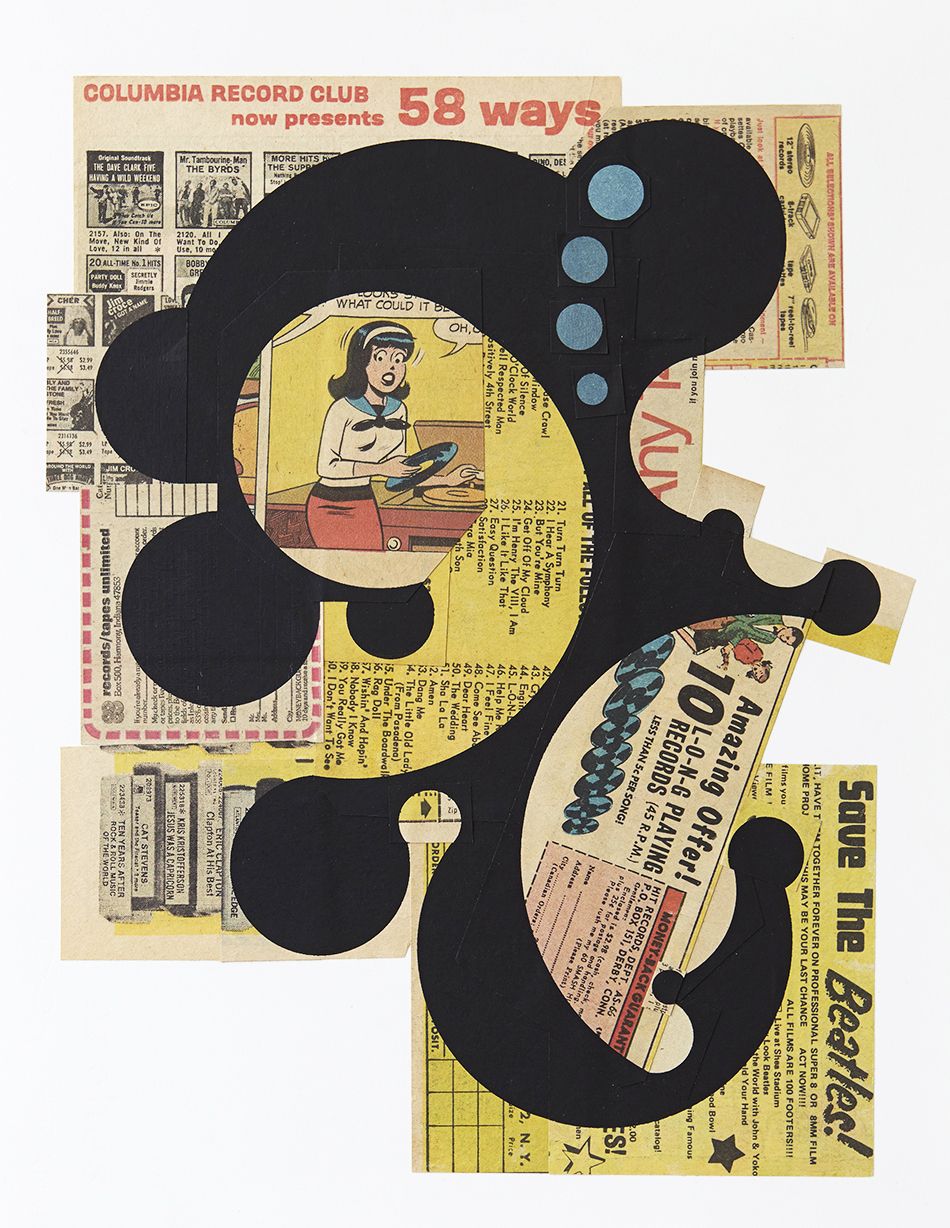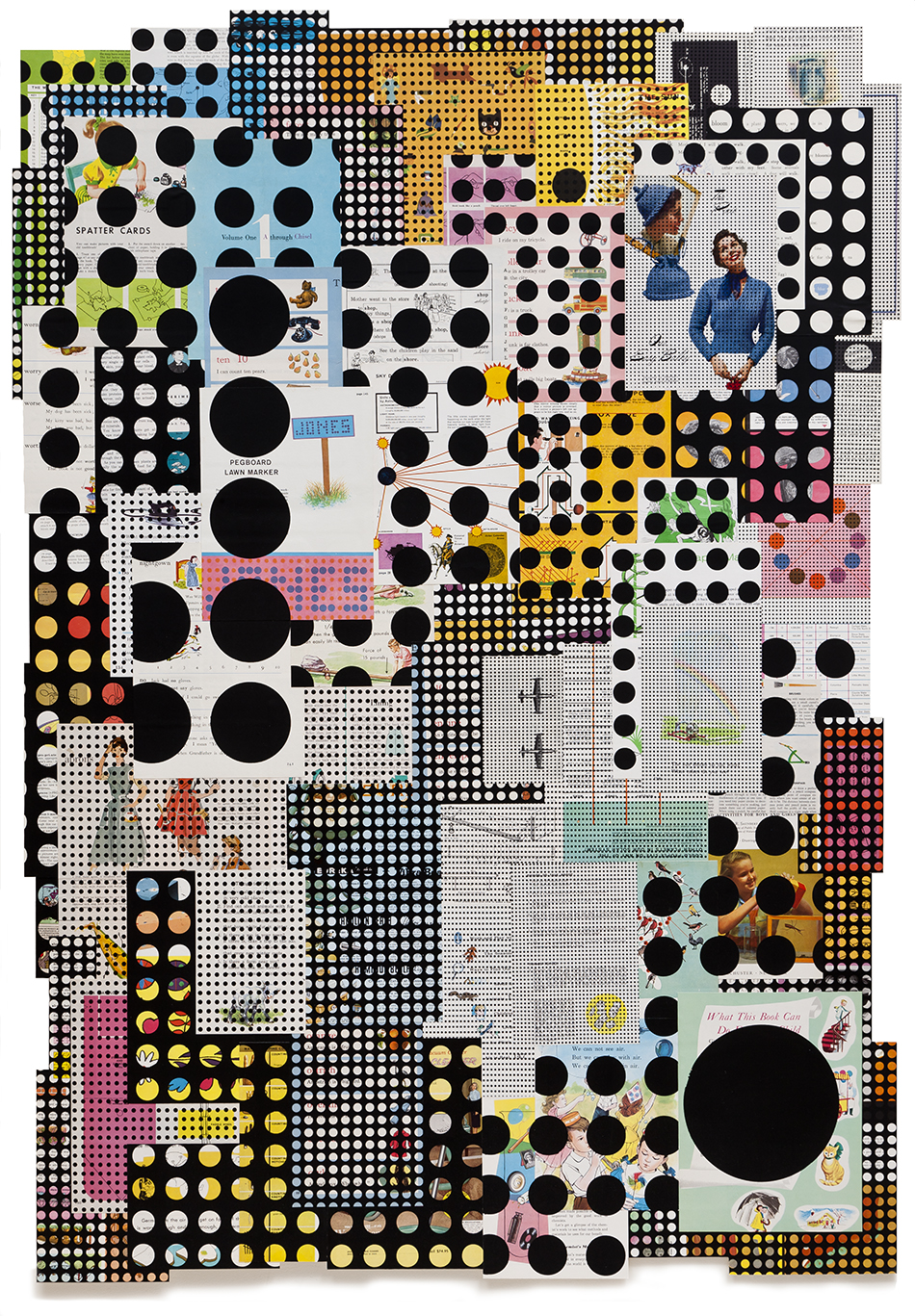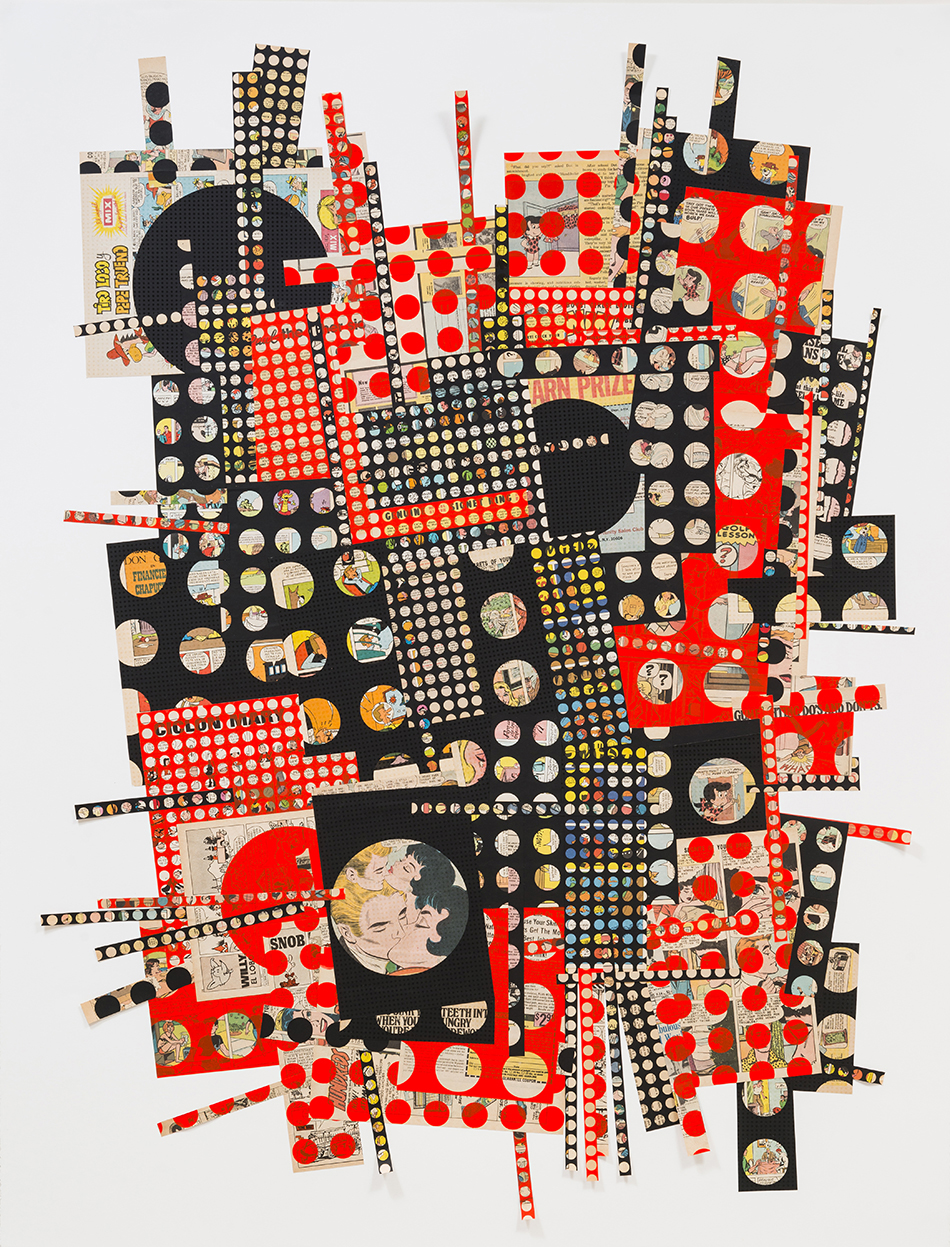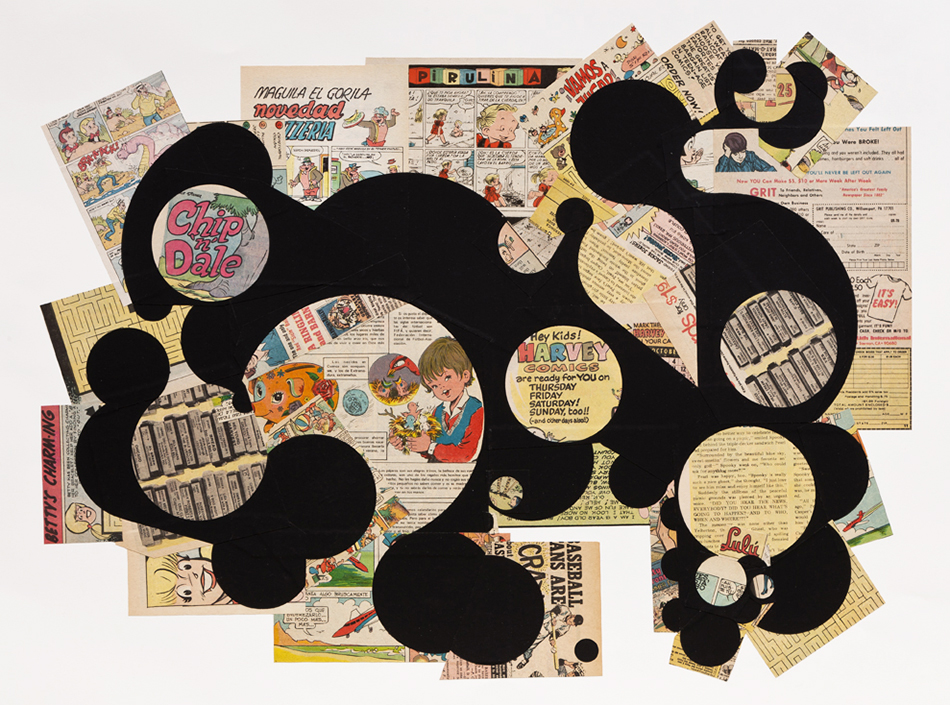1. Please introduce yourself, tell us a little bit about you.
I am a New York born and -based artist and designer and a second generation collage artist and collector. My mother, Elaine Lustig Cohen, is a graphic designer and artist and does collage. My parents had a rare art bookshop when I was growing up called Ex Libris that sold avant-garde 20th-century books and ephemera, so I was exposed at a young age to artists like Lissitzky, Zwart and Schwitters. I always say I learned about art, design and collecting by osmosis from my parents, though in contrast I am obsessed by everyday low art stuff: candy wrappers, food labels, comic books, stickers, recycled toys and vintage kids books to name a few.
2. Recent, current or future projects you are involved in that you would like to share with us?
I just completed a silkscreen edition to benefit the International Print Center New York. It is printed on pages from a vintage children’s dictionary from the 1940s. After completing the edition I came up with an installation project that involves silkscreening different patterns of dots on old dictionary pages and then pinning up roughly 150–200 pages to the wall. I like to work large. I am looking for a space to show it. Also recently I finished a photography project called Two/Dos. It is a series of diptychs from three trips that I have taken to Mexico City in the last few years. I love to travel and fell in love with Mexico City, which is endlessly inspiring. Nothing makes me happier than getting lost in a foreign city and taking photos. I made a book of this work and am in the process of blowing them up large. And I just finished three new collages for “The Weird Show” in Brooklyn this April. I am super excited to be included and can’t wait to meet the Weird crew!
3. What kind of things influence your work?
Many of my influences are old deep-seated obsessions from my childhood: the dots,
Hanna-Barbera cartoons and The Flintstones, globes and maps and my love of super bright colors. Travel can also be a big influence. I love finding material to work with in foreign supermarkets and stationery stores. There is something so satisfying about discovering gems in places where they actually belong rather than in a curated flea market setting. I have lived in Spain on and off since I was a child and have done many collage series with bullfighting and flamenco imagery.
4. How is your normal process of collaging? (idea or commission, where do you get your materials or find your images, which is your cutting technique, best way you have found to paste, where do you work and how, and very important: what do you do with your scraps)
There are usually four stages in my work process. The first is choosing and editing the material. Lately I have a few recurring themes: comics, maps and children’s books. I’ve recently begun to cut up my own collection of comics from my childhood, which I call personal vintage! The second stage would be going to the printshop and silkscreening. Silkscreen is an essential component to all my work. All I ever silkscreen are dots, either in the positive or the negative. I started silkscreening in 2007 and it literally changed my life. I discovered a way to marry my love of vintage ephemera and books with my obsession with dots. The third, most important and time-consuming stage is putting all the pieces together. For me it’s like putting together a puzzle, creating order out of chaos. I like to work large so I loosely secure my collages together with white artist tape. The fourth and most excruciating stage is the gluing. My mother introduced me to Gudy, which is an archival sheet glue and I use a straight edge and x-acto to cut out the pieces. Some of my big pieces take 25–30 hours to glue. Honestly if I had a superpower, it would be flawless speed gluing! And scraps; well I save them till they become scrappy scraps, then they get the boot.
5. Which is your latest discovery in the collage world? What advice can you give to a collage beginner?
The last artist I fell head over heels for is El Anatsui, who is originally from Ghana but works in Nigeria. His work is assemblage or sculpture. He takes discarded objects like metal bottle caps, milk top labels and wine bottle collars and transforms them into monumental patterned wall pieces. They are breathtaking and defy classification.
Anything goes. Have fun. And NEVER use rubber cement, it’s bad news.
6. What do your friends/family say about your collage work? And, what do you do when you are not working on art?
They say “fun” or “dots again?” or “aren’t you getting sick of dots?” I often get called Dot Lady or just plain Dot.
It is a given that I listen to music when I work but when I am not working on art I am a big music nerd, which means lots of research and going to lots of shows. I get a lot of inspiration from the radio station KEXP in Seattle. They are my musical BFF. I also love movies and TV and have been known to do my fair share of binge TV watching. I also read a lot, mostly fiction. And thanks to the new bike-share program in NYC, I have gotten addicted to bike riding. I work at home so getting out and about is key to my sanity.
7. Would you like to ask anything to John Baldessari? Shoot.
So why do you like dots?


